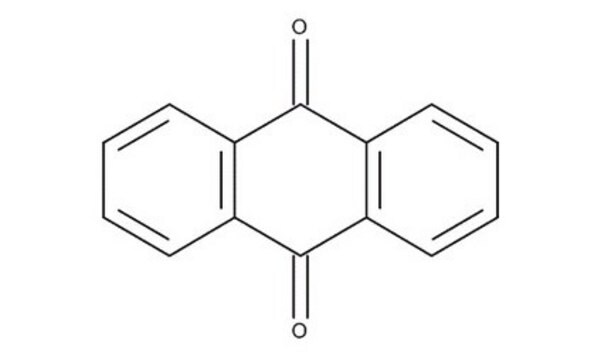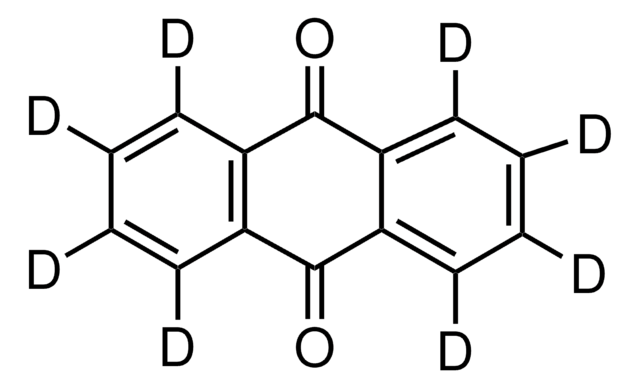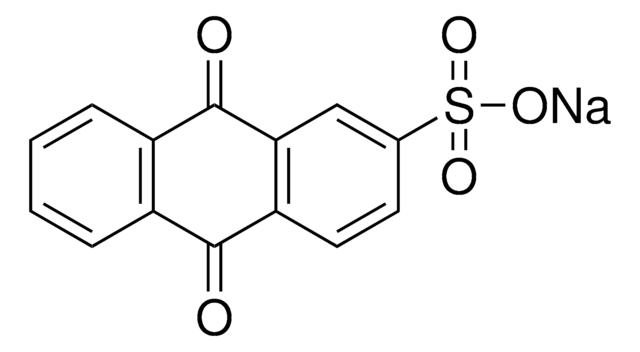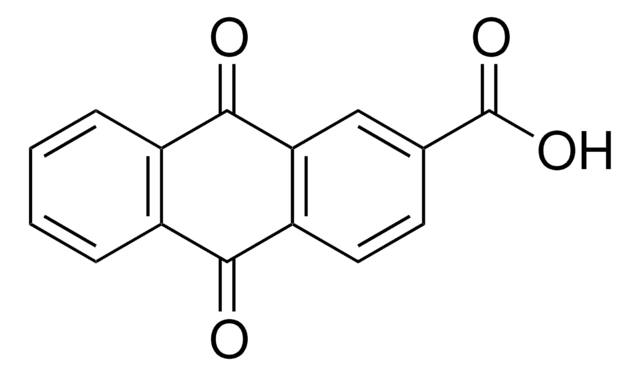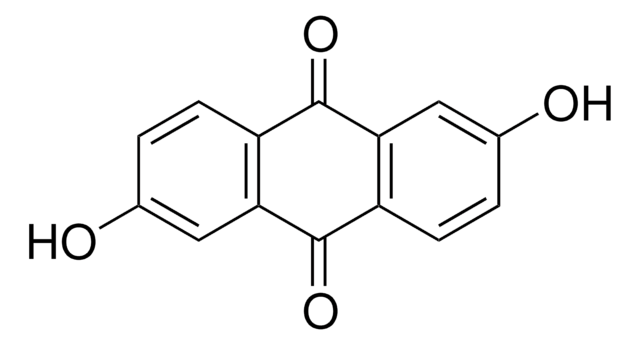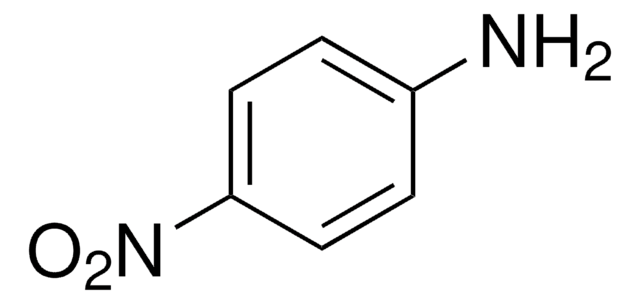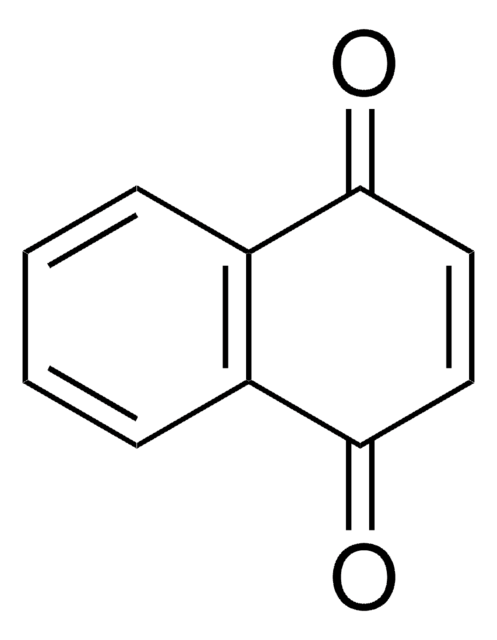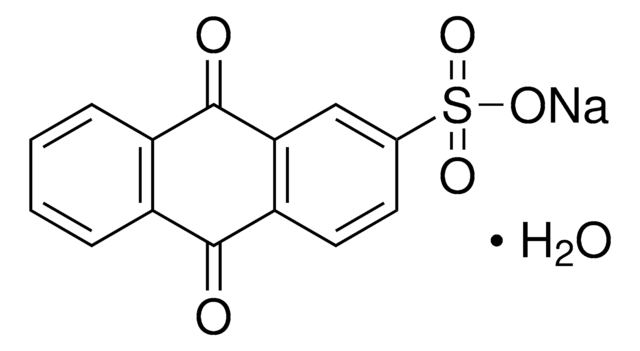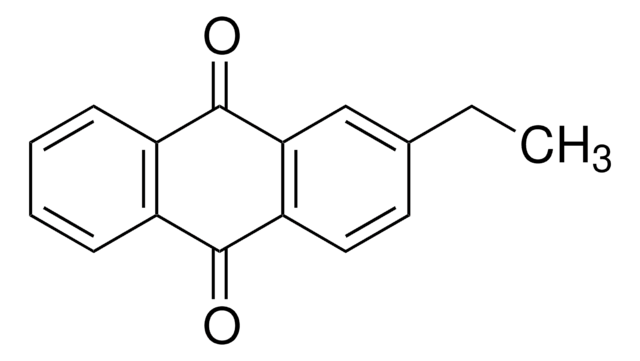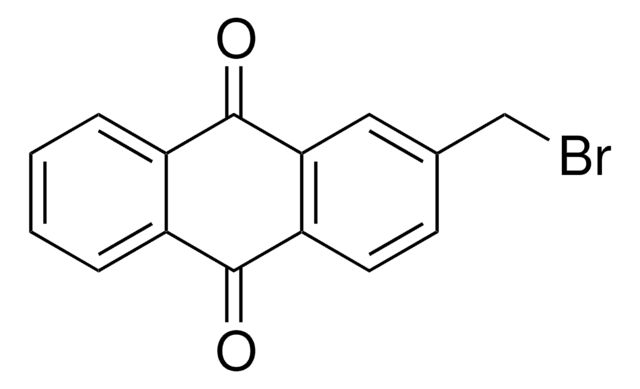A90004
Anthraquinone
97%
Synonym(s):
1,4,11,12-Tetrahydro-9,10-anthraquinone, 9,10-Anthraquinone, Anthracene-9,10-quinone, Anthradione
About This Item
Recommended Products
vapor density
7.16 (vs air)
Quality Level
vapor pressure
1 mmHg ( 190 °C)
Assay
97%
form
powder
bp
379-381 °C (lit.)
mp
284-286 °C (lit.)
SMILES string
O=C1c2ccccc2C(=O)c3ccccc13
InChI
1S/C14H8O2/c15-13-9-5-1-2-6-10(9)14(16)12-8-4-3-7-11(12)13/h1-8H
InChI key
RZVHIXYEVGDQDX-UHFFFAOYSA-N
Looking for similar products? Visit Product Comparison Guide
Related Categories
Application
- In the synthesis of water-soluble anthraquinone derivatives such as 9,10-anthraquinone-2,6-disulfonic acid, disodium salt (AQ-2,6) and 9,10-anthraquinone-2-sulfonic acid, monosodium salt (AQ-2). These AQ derivatives are useful as redox catalysts for aeration in Becher process.
- As an indicator to determine the acid strength of poly(4-vinylpyridinium) hydrogen sulfate (P(4-VPH)HSO4) catalyst.
- As a pulping catalyst.
Signal Word
Danger
Hazard Statements
Precautionary Statements
Hazard Classifications
Carc. 1B - Skin Sens. 1
Storage Class Code
6.1C - Combustible acute toxic Cat.3 / toxic compounds or compounds which causing chronic effects
WGK
WGK 1
Flash Point(F)
482.0 °F - closed cup
Flash Point(C)
250 °C - closed cup
Personal Protective Equipment
Choose from one of the most recent versions:
Already Own This Product?
Find documentation for the products that you have recently purchased in the Document Library.
Customers Also Viewed
Our team of scientists has experience in all areas of research including Life Science, Material Science, Chemical Synthesis, Chromatography, Analytical and many others.
Contact Technical Service